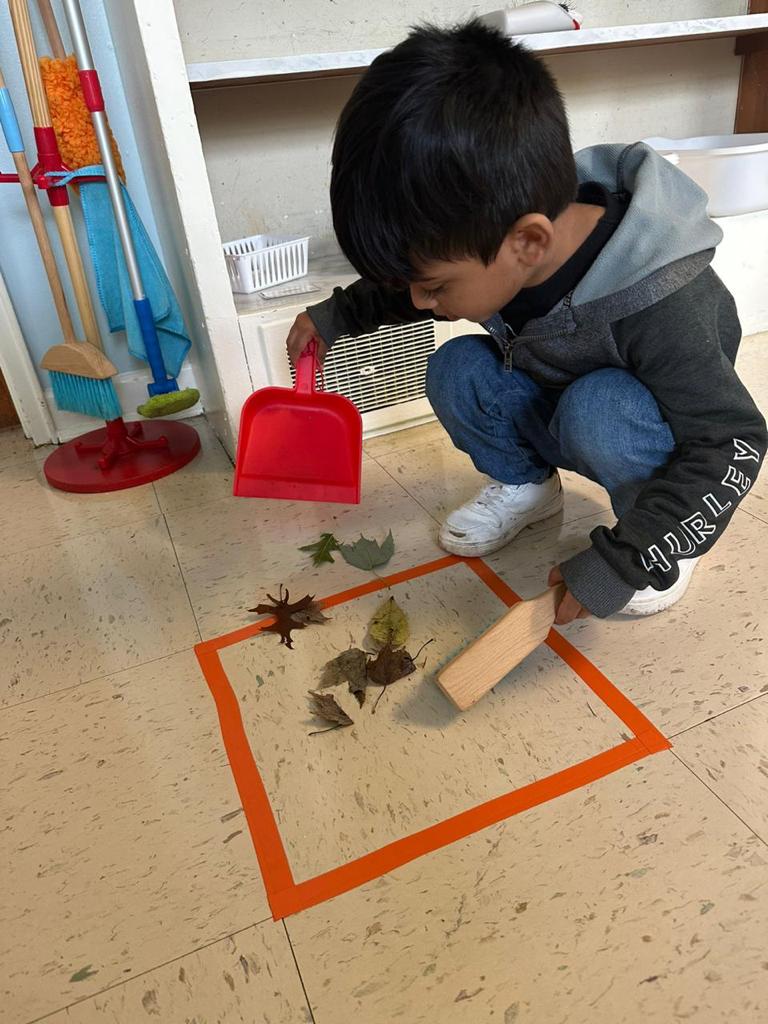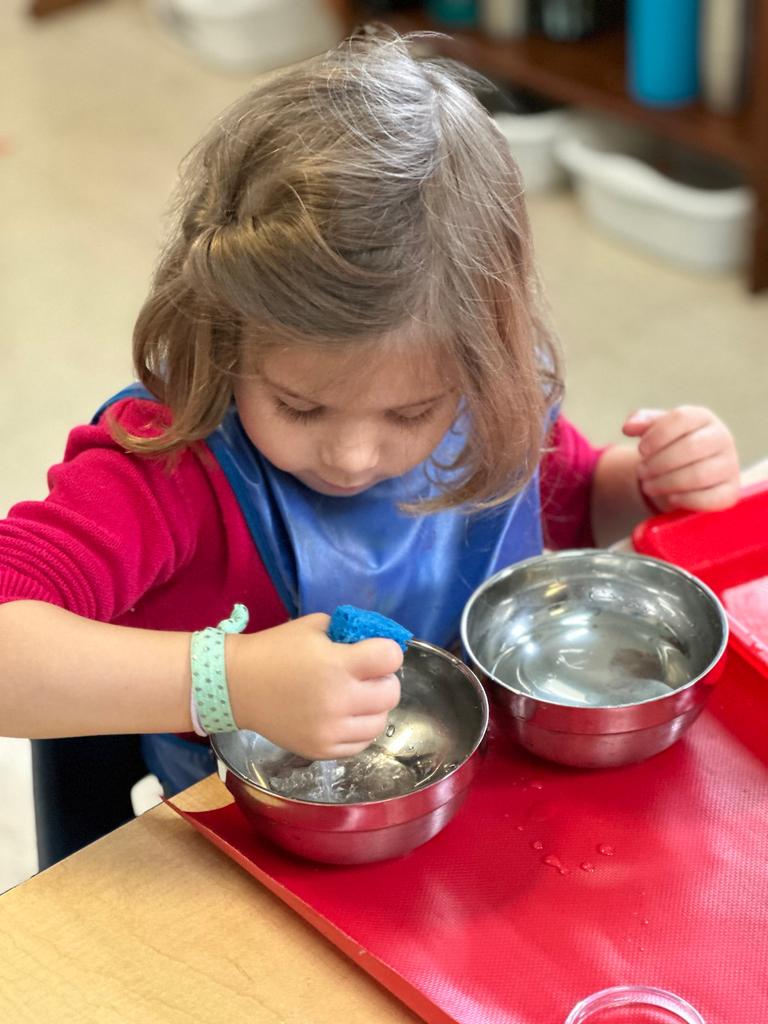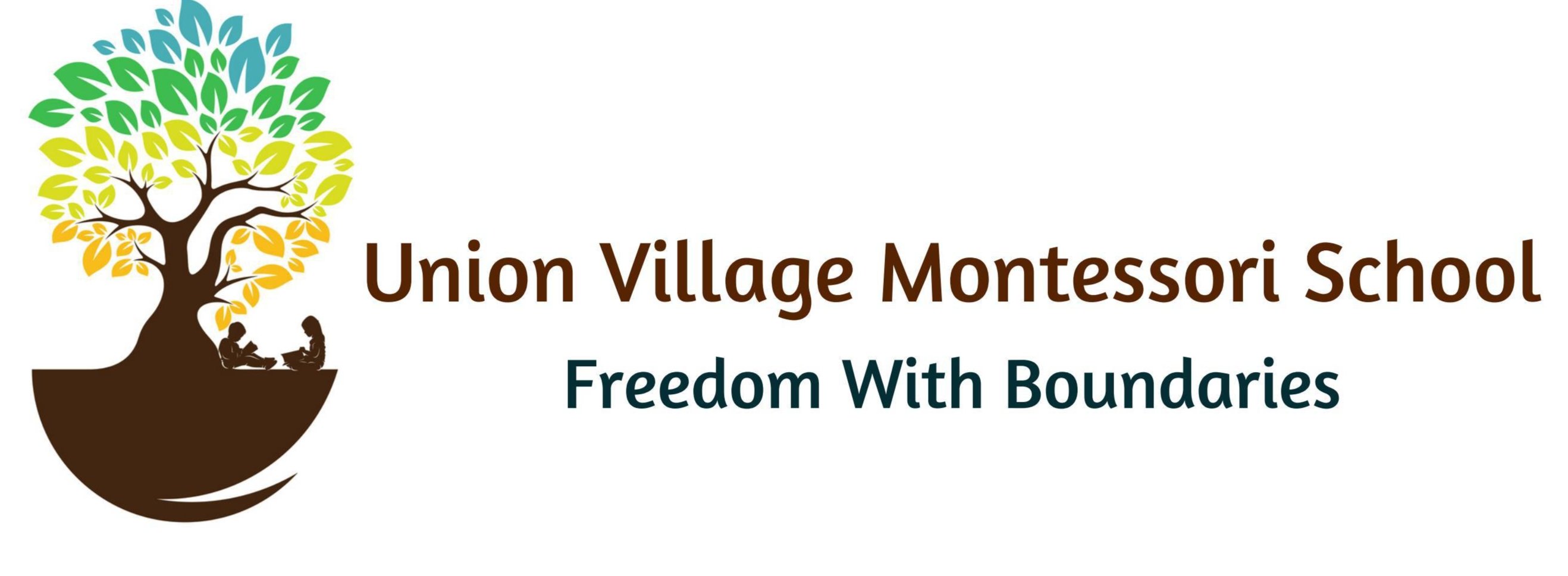

Practical Life
Practical Life activities are to set forth the child’s ability and freedom to work in their own time and space. Indirectly, the child, through Practical Life, is addressing their attention to detail as each activity has a specific regiment of procedure and pavement. While these steps and placements seem tedious and exaggerated to the curious onlooker, it satisfies the child. The purpose of these exercises is the concentration and attention within the process, not the result.
Dr. Montessori viewed the Practical Life area as the most critical area of the classroom, and this vital area accounts for 25% of the classroom environment. In this area, a new student gets introduced to their taste of freedom through movement, and the unfolding mind awakens to discoveries. Through its pleasure to the child, each activity of Practical Life has an indirect preparation for things to come. As a whole, Practical Life subtly invokes independence, leading to greater self-confidence. Concentration is enhanced through repetition. Each Practical Life work has a well-understood purpose which has to be carried out as a part of real social life in a real world, using real things (Standing, 1957, pp. 220-230)
Practical life involves any physical activity that assists a child to grow in motor skills, cognitive development, self-confidence and development of his or her own personality, and most of all, independence. The activities give the child an understanding of his environment and how it works. The child enjoys all types of work and keeps the environment beautiful for all to use. This work builds self-esteem, making him feel valuable and useful. In addition, they also develop hand-eye coordination, pincer grip, and manual dexterity.
Being able to take care of oneself gives not only self-confidence and freedom but also concentration in the mastery of concrete learning that eventually leads to abstract learning. We need to have the order to be able to form a routine and make it a ritual. Practical life helps create a homely environment in the classroom, and it helps children realize that the work they do in the classroom is a part of a routine and ritual of everyday life. While maintaining an orderly routine, we form the Montessori rituals that allow a connection between the students and their daily life activities. Learning is more meaningful when it is connected to real life.
Through Practical Life exercises, children develop a true “social feeling”, for they work in the environment of the community in which they live, without considering whether it is for their own or for the common good. (The Discovery of the Child, page 95).
